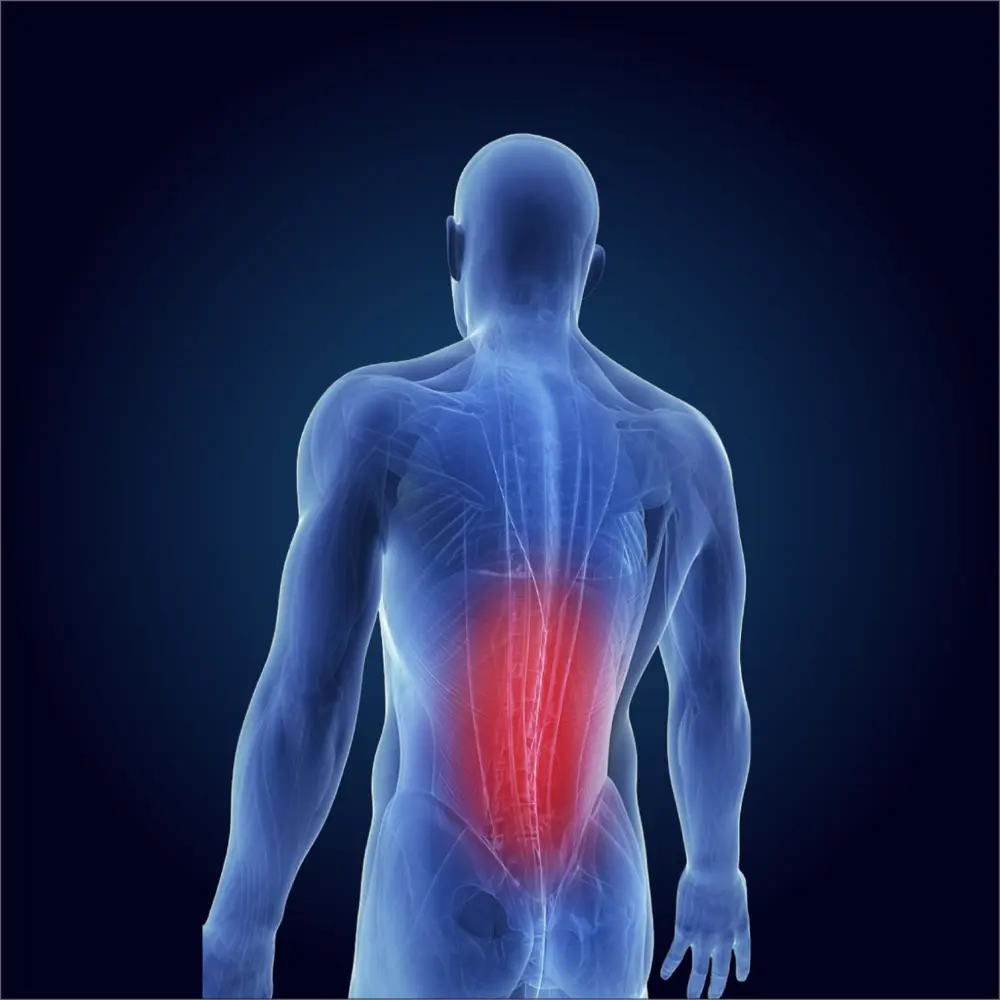LOWER BACK PAIN
Lower back pain or ‘Lumbago’ pain comes from muscle strain, tension or injury in the lower back, usually affecting the bones, discs, nerves or spine muscles. The lumbar spine (lower back) is very susceptible to injury. Depending upon the injury sustained by the muscles, ligaments, discs, joints, or vertebrae, symptoms may vary. But the most common ones are:
- Sharp or dull pain: The pain might come from time to time, and sometimes it is constant. It is accompanied by inflammation or soreness.
- The pain doesn’t decrease when you rest.
- The lower back muscles feel tight or constantly cramped.
- You find it difficult to sit, sleep, or perform other daily activities.
- There is numbness or tingling, especially in your feet.
- Your legs feel weak and you can’t move around easily.
- The pain from your back radiates to the legs.
- There’s a loss of bowel movement or pain in the groin area.
Get immediate medical care if:
- You experience chills and fever
- You lose weight inexplicably
- You lose bowel control
- There’s numbness and tingling in the arms, legs, and the affected area
- The pain radiates to your legs
These symptoms could be indicating a deeper issue.
Lower back pain is one of the leading causes of disability worldwide. The lower back or lumbar spine provides support, strength, and flexibility while performing various activities of daily living. Muscles around the spine help in maintaining the spinal alignment and also offloads the extra stress it bears. Lower back pain comes with its disabling effects on the human body when not taken care of. Hence it becomes really important to get it treated in time.
Lumbago pain is the most common type of back pain and occurs because of either mechanical or non-mechanical in nature.
- Poor posture: Sitting for long hours, frequent bending, or lifting loads in the wrong posture are the most common reasons.
- Spine Injuries: This could happen due to sports or gym, accidents and even simply by lifting heavy loads in the wrong posture.
- Lifestyle: Factors like lack of activity, smoking, Stress, Weight, pregnancy can aggravate lower back pain
- Age & Genetics: Hereditary and age-related degeneration an also be an underlying cause for lower back pain
Non-surgical spinal segment decompression or Physical therapy or both can be done, depending on the condition. Medications or injections are prescribed as and where needed.
Lower Back Pain Prevention
You can very well avoid or prevent low back pain with the following simple, self-help strategies which can also be effective in preventing the recurrence of back pain.
- Exercise regularly to keep your back muscles strong and flexible.
- Maintain a good healthy posture always.
- Adopt proper techniques while lifting, bending, etc.
- Avoid sitting in one position for a long time.
- Alleviate stress.
- Quit smoking.
How VerteCare Spine Diagnoses Lower Back Pain?
In the VCS clinic, the diagnosis is done by asking the patient’s history, conducting a thorough physical examination, and doing imaging tests (if needed), which helps in analyzing the root cause of the problem.

Lower Back Pain FAQs
The recovery period varies from person to person; depending on the severity of the problem, chronicity of the condition; co-morbidities; general health condition and so on.
Running or jogging worsens the pain. Consult your physician before doing such an activity.
Sometimes, it may not be possible to pinpoint the root cause of pain. However, many reasons like bad posture, lifestyle habits, weight, reduced bone and muscle mass, disc degeneration or dessication or injuries might cause low back pain.
The best sleeping position while having lower back pain is on the side with partial bending of the knees. Keeping your knees bent will help balance the body and reduce pressure on the lumbar spine. You can also keep a small pillow between your knees.
You should consider walking as it’s a low-impact aerobic exercise and may help in reducing low back pain. But, if walking is one of the aggravating factors of your pain, it should be avoided.
Major lifestyle factors that may alter the chances of developing low back pain are obesity, smoking, lack of physical activity, poor posture.
Practicing specific asanas or poses may help in relieving you from lower back pain. Yoga helps in improving the flexibility of muscles. It also improves posture. Breathing exercises can relieve stress. Check with your physician to know the asanas that benefit you in providing lower back pain relief.
